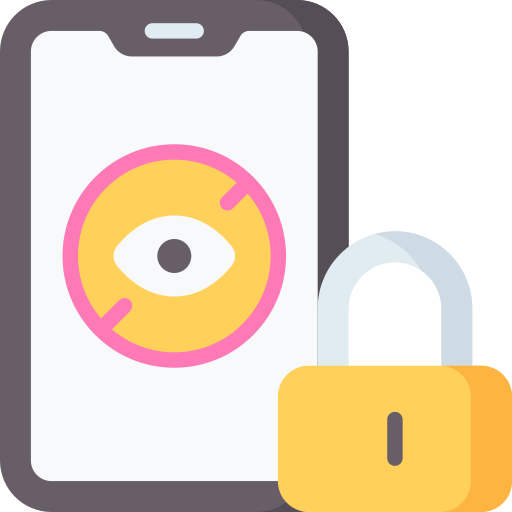The Impact of Excessive Screen Time on TikTok Usage
Excessive screen time on TikTok can have various detrimental effects on users. Constant scrolling and consuming content for prolonged periods can lead to physical and mental health issues. Spending excessive time on the platform often leads to sedentary behavior, which can contribute to a sedentary lifestyle and potential weight gain. The lack of physical activity can also increase the risk of developing chronic conditions such as obesity and cardiovascular diseases. Moreover, excessive screen time on TikTok can negatively impact mental health by causing prolonged exposure to unrealistic beauty standards, cyberbullying, and comparison with others, leading to feelings of inadequacy and low self-esteem.
Furthermore, excessive TikTok usage can lead to poor academic performance and lower productivity in other areas of life. Spending excessive time on the platform often means neglecting important tasks and responsibilities, such as schoolwork or professional obligations. This can result in decreased focus, difficulty concentrating, and a decline in overall efficiency. Additionally, excessive screen time can interfere with sleep patterns, as the addictive nature of social media platforms like TikTok can keep users engaged late into the night, leading to sleep deprivation and subsequent daytime drowsiness. These negative impacts highlight the importance of recognizing and addressing excessive screen time on TikTok to maintain a healthy balance between digital engagement and other aspects of life.
Recognizing the Signs of Excessive TikTok Screen Time
Excessive TikTok screen time can have detrimental effects on individuals, both physically and mentally. It is crucial to be aware of the signs that indicate excessive usage in order to address the issue promptly. One notable sign is when individuals prioritize TikTok over essential tasks or responsibilities. They may find themselves constantly scrolling through the app, neglecting their work, studies, or personal relationships. This behavior can lead to decreased productivity and overall dissatisfaction with one’s daily life.
Another sign of excessive TikTok screen time is a decline in mental well-being. Spending excessive hours on TikTok can contribute to feelings of loneliness, comparison, and low self-esteem. This is especially true when individuals constantly compare themselves to the unrealistic standards often portrayed on the app. Moreover, excessive screen time can interfere with healthy sleep patterns. Late-night scrolling sessions can disrupt sleep routines, leading to fatigue and reduced cognitive functioning throughout the day.
Recognizing these signs of excessive TikTok screen time is the first step in addressing the issue. By being aware of the negative impact excessive usage can have, individuals can take proactive measures to establish healthier boundaries and strike a balance between their online and offline lives.
Understanding the Importance of Setting Boundaries for TikTok Usage
Setting boundaries for TikTok usage is an essential aspect of maintaining a healthy relationship with social media. With the increasing reliance on technology for entertainment and communication, it is crucial to establish limits to prevent the negative impacts of excessive screen time. By setting boundaries, individuals can maintain a better balance between their digital and offline lives.
One key reason why setting boundaries is necessary is to promote mental and emotional well-being. Excessive TikTok usage can lead to addictive behaviors, decreased productivity, and social isolation. By setting limits on screen time, individuals can protect their mental health and prioritize other important activities such as work, studies, and spending quality time with loved ones. Additionally, boundaries can help individuals avoid the negative effects of comparison and the pressure of constantly staying connected in a digital world. Establishing clear limits can provide a sense of control and reduce the possibility of becoming consumed by virtual interactions. Overall, understanding the importance of setting boundaries for TikTok usage is vital for maintaining a healthy and balanced lifestyle.
Exploring Different Methods for Setting Screen Time Restrictions on TikTok
There are several effective methods for setting screen time restrictions on TikTok to promote healthy digital habits. One popular approach is using built-in app features that allow users to set specific time limits for their TikTok usage. By utilizing these features, individuals can allocate a certain amount of time each day or week for using the app, helping them stay mindful of their screen time and prevent excessive usage.
Another method for setting screen time restrictions on TikTok is through the use of third-party apps or software. These tools allow users to track and manage their screen time across multiple apps, including TikTok. By setting limits and receiving notifications when they are close to reaching their designated time, users are encouraged to be mindful of their usage and make conscious decisions about when and how much time they spend on the app.
Utilizing Parental Control Features to Limit TikTok Usage
Among the various methods available to manage and limit TikTok usage, utilizing parental control features is one effective way to create a safe and balanced screen time environment for children. Parental control features provide parents with the ability to set content filters, restrict access to specific apps or websites, and even limit the amount of time spent on TikTok. By activating and customizing these controls, parents can ensure that their children are engaging with TikTok responsibly and within healthy limits.
One of the key advantages of using parental control features is the ability to set time restrictions on TikTok usage. Parents can allocate specific time slots or set a maximum daily limit for the app, ensuring that their child does not spend excessive amounts of time scrolling through content. By enforcing clear boundaries, parents can encourage healthy screen time habits and prevent TikTok from becoming a source of distraction or addiction. Additionally, parental control features allow parents to monitor their child’s activity on TikTok, providing insights into usage patterns and helping identify any potential issues that need to be addressed.
Implementing Time Management Techniques to Regulate TikTok Screen Time
One effective time management technique to regulate TikTok screen time is to set specific time limits for usage. By allocating a predetermined amount of time each day for TikTok, individuals can avoid spending excessive hours scrolling through the app. Setting a timer or using an alarm can serve as helpful reminders to stick to the designated time frame. Additionally, individuals may find it beneficial to schedule TikTok usage during specific time blocks, such as during breaks or after completing important tasks, to avoid it becoming a constant distraction throughout the day.
Another technique to regulate TikTok screen time is to establish a “no-phone zone” during certain periods. Designating specific hours or locations where smartphones are not allowed can help individuals create a boundary between their digital and offline lives. For example, setting a rule to avoid using TikTok during mealtimes or before bedtime can be effective in reducing screen time. By intentionally creating these boundaries, individuals can develop healthier habits and allow themselves to engage in other activities that promote relaxation, productivity, or social interaction.
Setting Clear Rules and Expectations for TikTok Usage
Setting clear rules and expectations for TikTok usage is essential for promoting healthy screen time habits and preventing excessive use. When it comes to setting rules, it is important for parents or guardians to establish specific guidelines regarding the amount of time allowed for TikTok usage each day. This can help create a sense of structure and boundaries, ensuring that TikTok does not take over other important activities such as school work, physical exercise, or face-to-face social interaction.
In addition to time limits, setting expectations for appropriate content and behavior on TikTok is crucial. Parents should have open and honest conversations with their children about the potential dangers of inappropriate content and online interactions. Emphasizing the importance of privacy, kindness, and respect while using TikTok can help foster a safe and positive online experience. By clearly outlining these expectations, parents can help their children navigate the TikTok landscape responsibly and make wise choices while interacting with others.
Encouraging Healthy Alternatives to TikTok for Leisure Activities
The excessive use of TikTok can have negative effects on various aspects of our lives, such as physical health, mental well-being, and social interactions. To mitigate these effects and promote a healthier balance, it is essential to encourage alternative leisure activities that can be equally engaging and enjoyable.
One such alternative is engaging in outdoor activities. Spending time in nature not only provides a break from screen time but also offers numerous benefits for our physical and mental health. Activities like hiking, cycling, or simply going for a walk can help improve cardiovascular fitness, reduce stress, and enhance mood. Additionally, being in nature allows for a connection with the environment and can foster a sense of peace and tranquility.
Another healthy alternative to TikTok is engaging in hobbies or creative pursuits. This can include activities such as painting, drawing, writing, playing a musical instrument, or cooking. These activities not only provide a break from screen time but also allow individuals to express themselves creatively, explore new interests, and develop new skills. They can be a great way to relax, de-stress, and engage in activities that promote personal growth and fulfillment.
Seeking Support and Establishing a Supportive Environment for Screen Time Management
Support is crucial when it comes to managing screen time, especially for TikTok usage. Seeking support from friends, family, or even online communities can provide guidance and motivation in establishing a supportive environment for screen time management. Sharing experiences and strategies with others who are facing similar challenges can offer valuable insights and encouragement to stay on track.
Establishing a supportive environment begins with open communication and understanding. It is essential to have conversations with loved ones about the importance of managing screen time effectively and the potential negative impacts of excessive TikTok usage. Creating a safe space where concerns can be discussed and solutions can be brainstormed is key. By fostering an environment of empathy and support, individuals can feel more motivated and confident in their efforts to regulate their TikTok screen time.
Monitoring and Adjusting Screen Time Restrictions to Ensure Effectiveness
Monitoring and adjusting screen time restrictions is crucial for ensuring the effectiveness of managing TikTok usage. By regularly monitoring the time spent on TikTok and evaluating its impact on daily routines and responsibilities, individuals can gain insight into the extent of their screen time habits. This can be done by keeping track of how much time is spent on the app each day and reflecting on whether it is interfering with other aspects of life, such as work or personal relationships. This self-awareness allows individuals to assess whether their current screen time restrictions are sufficient or if adjustments need to be made to better balance their TikTok usage.
In addition to monitoring screen time, it is essential to regularly reassess and adjust the restrictions in place. This involves evaluating the effectiveness of the current boundaries and determining whether they are helping to achieve the desired goals. For example, if the aim is to reduce TikTok usage to make time for other activities, such as hobbies or socializing, individuals can examine whether the current restrictions are successfully facilitating these changes. By being flexible and adaptable with screen time restrictions, individuals can ensure that they remain effective and align with their evolving needs and priorities.
Monitoring and adjusting screen time restrictions is a continuous process that requires ongoing attention and effort. By regularly evaluating the impact of TikTok usage and making the necessary adjustments, individuals can maintain a healthy balance between their online and offline lives. This allows for a more mindful and intentional approach to screen time management, ultimately promoting overall well-being and ensuring that TikTok usage serves as a positive and enriching experience.
What is the impact of excessive screen time on TikTok usage?
Excessive screen time on TikTok can lead to various negative effects such as reduced productivity, decreased physical activity, disrupted sleep patterns, and potential addiction to social media.
How can I recognize the signs of excessive TikTok screen time?
Signs of excessive TikTok screen time include neglecting responsibilities, difficulty in focusing on tasks, withdrawal symptoms when not using TikTok, neglecting personal relationships, and experiencing mood swings or irritability.
Why is it important to set boundaries for TikTok usage?
Setting boundaries for TikTok usage is important to maintain a healthy balance between screen time and other activities, ensure productivity, promote mental and physical well-being, and prevent excessive dependence on social media.
What are some methods for setting screen time restrictions on TikTok?
Different methods for setting screen time restrictions on TikTok include using built-in parental control features, third-party apps for screen time management, utilizing device settings, or establishing specific time slots for TikTok usage.
How can parental control features be used to limit TikTok usage?
Parental control features on devices can be used to set time limits, restrict access to certain apps, block explicit content, and monitor and manage TikTok usage for children.
How can time management techniques help regulate TikTok screen time?
Time management techniques such as setting specific schedules, using timers or reminders, practicing the Pomodoro technique, and prioritizing tasks can help regulate and limit TikTok screen time.
How can I set clear rules and expectations for TikTok usage?
Setting clear rules and expectations for TikTok usage involves discussing and establishing guidelines with individuals or family members, including specific time limits, acceptable content, and consequences for breaking the rules.
What are some healthy alternatives to TikTok for leisure activities?
Some healthy alternatives to TikTok for leisure activities include reading books, engaging in physical exercise, pursuing hobbies or creative activities, spending time outdoors, socializing with friends and family, and learning new skills.
How can I seek support and establish a supportive environment for screen time management?
Seeking support from family members, friends, or support groups can provide accountability and guidance in managing screen time. Creating a supportive environment involves open communication, setting a positive example, and fostering an understanding of the importance of healthy screen time habits.
Why is monitoring and adjusting screen time restrictions important for effectiveness?
Monitoring and adjusting screen time restrictions is important to ensure that the set limits are effective in achieving the desired outcomes, adapting to changing circumstances, and maintaining a healthy balance between screen time and other activities.




